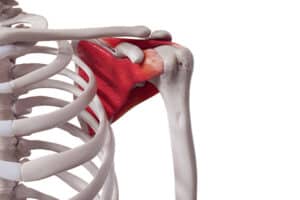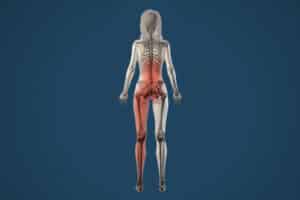What Is The Difference Between Physiotherapists and Kinesiologists?

If you have ever wondered what the difference between a kinesiologist and a physiotherapist is, or you have no idea what a kinesiologist is to begin with, you have come to the right place. The information that follows will give you a better idea of what each profession is, and when you might want to consider seeing one and/or the other.
Keep in mind that this information is about kinesiologists and physiotherapists in British Columbia, and may not be completely accurate when applied to other countries, or even to other provinces or territories within Canada.
Education
First off, it is important to understand the educational differences of the two professions:
- Kinesiologist: Before practicing as a kinesiologist, individuals are required to first obtain a bachelor’s degree in kinesiology (or equivalent, such as human kinetics) at an accredited post-secondary institution. This is four years worth of studying and practical experience.
- Physiotherapist: To become a physiotherapist, a master’s degree must be earned following a bachelor’s degree. Most individuals will acquire a bachelor’s degree in kinesiology first before going on to receive their master’s in physiotherapy. Combined this is six to seven years worth of studying and practical experience.
As you can see, physiotherapy requires a greater level of education than a career as a kinesiologist. This gives physiotherapists an even deeper understanding of human anatomy and musculoskeletal injuries, and expands their potential scope of practice (eg. ability to learn and apply more invasive techniques, such as dry needling).
However, it is important to note that there are many options of continuing education for individuals in either profession once they have begun working. In other words, a kinesiologist specialized in gait analysis of marathon runners is likely more knowledgeable in this area than a physiotherapist specialized in rehabilitating individuals who were in car accidents, and vice versa. Furthermore, while it is not required at any point, both kinesiologists and physiotherapists can progress further academically if they so choose.
Methods of Treatment
Given the significant amount of overlap in the education that both professionals have, you might be wondering why these are distinct professions. While both are heavily educated in human anatomy and biomechanics, and both can prescribe a rehabilitative exercise program, the primary methods of treatment are what largely separates kinesiologists from physiotherapists.
- Kinesiologist: Most kinesiologists are primarily active therapists – they use demonstrations and educate others on how to improve themselves physically. For example, they can teach clients how to correctly perform strengthening and stretching exercises that are relevant to their needs. They can also assess and give advice on how to improve posture, gait, and other biomechanics. Kinesiologists can apply these techniques in a fitness context with athletes, or a rehabilitation context with injured individuals.
- Physiotherapist: Most physiotherapists are primarily passive therapists – they perform various techniques that require minimal effort from the client. Dry needling/intramuscular stimulation (IMS), cupping, manual stretch, massage, transcutaneous electrical nerve stimulation (TENS), laser, taping, shockwave, and extracorporeal shockwave therapy (EWST) are several examples of different passive therapeutic modalities that a physiotherapist may use. They work almost exclusively in a rehabilitation context.
As with the section on education, it is important to understand that these are not strict rules that the two professionals must follow. Kinesiologists can learn how to apply many of the same passive modalities as physiotherapists, just as physiotherapists can choose to provide more active rehabilitation. Typically it comes down to a combination of the needs of the client and the preferences and expertise of the professional.
How Do I Know Which Professional to Choose?
In many cases physiotherapists and kinesiologists go hand-in-hand. For example, if you have recently been in a car accident and you are still experiencing a lot of pain and decreased mobility, it is probably better to see a physiotherapist. The various passive techniques can help manage pain, increase mobility, and will typically be a lot less demanding on your body than engaging in active stretching and strengthening.
At some point you should transition to seeing a kinesiologist, as they can further your strength and mobility with an exercise program that you can perform on your own, even once you are no longer seeing the kinesiologist. This will likely come at the recommendation of the physiotherapist or your physician.
There are some situations where you may only want to see one professional or the other:
- Kinesiologist: If you are not suffering from a major trauma like a car accident or a severe sports injury, but rather just some overall stiffness and difficulty doing certain physical tasks, you may be able to just skip right to seeing a kinesiologist. The same might be said if you are looking for a strength and conditioning program specific to your athletic goals and needs.
- Physiotherapist: Many extended health plans cover physiotherapy but not kinesiology. For this reason, physiotherapy alone might be a better option financially if you do not think you need extensive rehabilitation. You may also choose physiotherapy if you believe you are in good shape, but you are just having a bout of pain or stiffness that passive treatment might help manage.
References
https://study.com/articles/Kinesiotherapy_vs_Physical_Therapy_Whats_the_Difference.html







